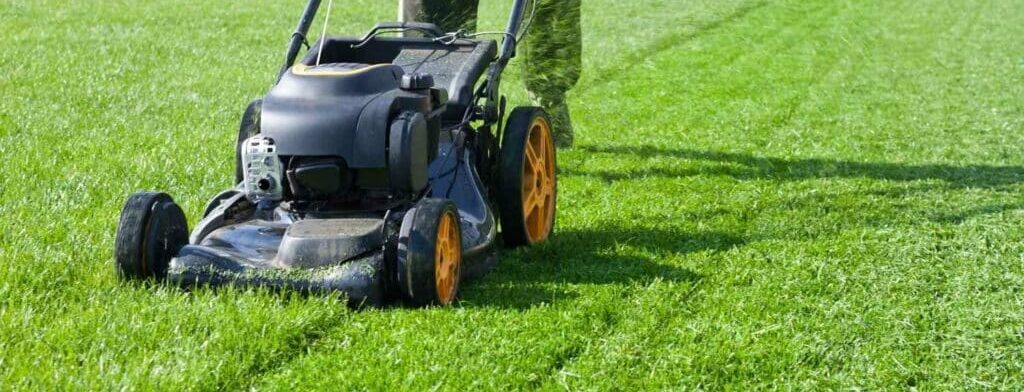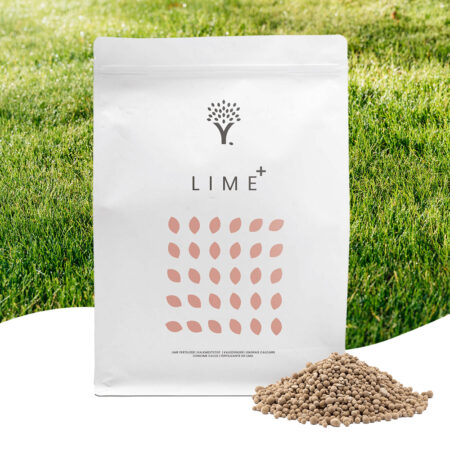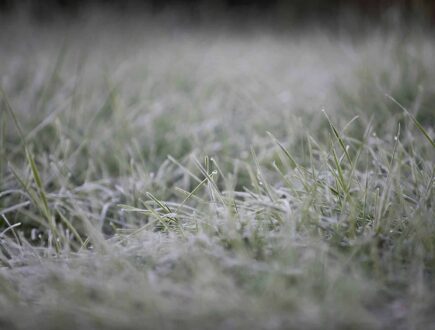Log in or create new account to save this product to your wishlist.

The 6 Most Common Lawn Care Mistakes in Spring
In spring, how do you make sure you can really do something for your lawn so that it starts looking better without putting even more strain on it?
🌱 All important maintenance moments for your lawn during the year. Leave your email and we will send you the lawn calendar for free.
Enter your email
Receive the lawn calendar in the mail
Enjoy a green lawn all year round!
It’s finally spring, and the sun is bringing everything back to life. Fortunately, your garden is craving a bit of love and care after the long winter. But before you roll up your sleeves, it’s a good idea to delve into the most common mistakes in spring lawn care.
You use too much or too little Lime
If you didn’t take good care of your lawn in the autumn, your lawn might greet you after winter with a hefty moss carpet. Leaf debris and other dead material lower the soil’s pH, especially during the cold months. Moss and weeds thrive in this environment and happily grow over your grass.

How to fix this:
Using lawn lime can easily counter one of the most common spring lawn care mistakes. Spread lime once the soil temperature reaches five degrees. The ground will then absorb the lime, resulting in gradual deacidification.
You don’t sharpen your garden tools
Every cut injures the plant and needs to heal. If the cut is smooth, the surface remains small and heals quickly. A “larger” cut is harder to heal and also more likely to lead to lawn diseases.
Ensure your tools are always sharp to avoid one of the most common spring lawn care mistakes. Mower blades should be sharpened after 15 uses at most. Schedule a maintenance check for all tools in the spring.
You fertilise too early or not at all
Fertilising your lawn after winter is like a big gulp of water on a hot summer day. Your lawn craves nutrients to recover and strengthen. There’s another important aspect of using fertiliser: it prepares your lawn for the coming season.

In spring, it’s crucial to use two fertilisers. Start with a spring lawn fertiliser once it’s warm enough and follow with a slow-release lawn fertiliser before summer begins.
But let’s focus on spring. As soon as the soil temperature is ten degrees, you can spread the fertiliser. Otherwise, it won’t be absorbed by the ground and will leach away. The high nitrogen content of fertiliser is perfect for feeding your lawn and preparing it for scarifying.
-
Spring Boost Lawn Fertiliser
Out of stock
12.99- Order by 2PM = shipped today
- 250.000+ satisfied customers!
- 60 day satisfaction guarantee
-
Lawn Lime
Out of stock
10.99- Order by 2PM = shipped today
- 250.000+ satisfied customers!
- 60 day satisfaction guarantee
-
Long Lasting Lawn Fertiliser
Out of stock
13.99- Order by 2PM = shipped today
- 250.000+ satisfied customers!
- 60 day satisfaction guarantee
If you don’t fertilise your lawn, the nutrients will eventually run out. The roots can’t nourish the grass, causing it to die off and leaving bare spots. These will be taken over by weeds, and soon it will be “goodbye grass” – “hello moss “!
You scarify too early or not at all
Annual scarifying is essential for combing weeds out of the lawn and keeping the grass nice and tight. I recommend scarifying in both spring and autumn. It removes moss and weeds that formed during the winter, allowing your lawn to grow healthily again.
However, because scarifying is very taxing on your lawn, it’s important to give it time to recover. Avoid this costly mistake in the spring and only scarify when the soil temperature is already ten degrees. Otherwise, lawn diseases and renewed weed infestations beckon. Ideally, fortify the soil two to four weeks in advance with a 2-in-1 moss killer and fertiliser.

- Addresses moss
- Strengthens the lawn
- Provides a deep colour within one week
You don’t overseed
A beautiful, dense lawn doesn’t appear by itself. Especially after scarifying, it’s important to sow fresh lawn seeds. Otherwise, new weeds will quickly grow in the newly treated areas. You can easily avoid this spring lawn care mistake.
Use MOOWY’s Quick Repair grass seeds to quickly fill in bare spots with lush green grass. Again, the soil temperature needs to be at least ten degrees. Otherwise, the seeds won’t germinate, and bare patches will remain in your lawn. Moss and weeds quickly grow on bare spots. The best time is in April when cold nights are typically over.

- Our choice for repairing your lawn
- Germinates quickly
- Premier League-quality lawn in no time
You mow too short or too infrequently
Did you know that there are growth hormones in your lawn that you can use to your advantage? More precisely, during mowing. But you need to mow properly. Your lawn needs to recover from mowing and develop runners.

The soil temperature needs to be at least ten degrees so the grass can grow again. Mowing when the ground is too cold is one of the most common spring lawn care mistakes. Your lawn is too weak to recover. Lawn diseases can easily infect your lawn, leaving bare spots behind.
Mowing too early turns your lawn into a weed paradise. Wait for the first growth phase in April. Ideally, combine the first mowing with scarifying and then fertilising. Mow your lawn weekly after that. Regular mowing stimulates the growth hormone. Your lawn spreads out sideways and forms a lush, green, and dense lawn.
By avoiding these common mistakes and following these tips, you’ll ensure a lush, healthy lawn that will make you proud throughout the spring and summer seasons!
Happy gardening!
-
Zero-Waste Gardening – This is How You Do It!Did you know that the average person wastes between 100 and 150 kilos of food every year? That's why the concept of zero-waste gardening is becoming increasingly important for environmentally conscious gardeners that like to do their gardening greener.Read more
-
How to Master Tree Pollarding: A Practical GuidePretty dense! What might be an insult to some, is certainly a compliment to trees. Through pollarding, you can make sure, your trees have a dense crown of beautiful leaves.Read more
-
Get Ready: Here are 5 Garden Trends for 2025Curious about the latest garden trends for 2025? From smart solutions to sustainable choices, discover all the outdoor trends that are transforming British gardens!Read more
-
How to Care for Plants in Winter: A Simple GuideWhen winter comes around, the care requirements of your plants change. Find out, how to adjust the care routine for your plants.Read more
-
Companion Planting Made Easy: A Step-by-Step TutorialStrategic plant partnerships can solve common gardening problems like pest invasion and disappointing yields. Find out which plants are great together in our companion planting guide.Read more
-
How to Grow Sweet Potatoes in Your GardenWant to know something splendid? A single sweet potato plant can produce 5 to 10 pounds (4.54 kg) of nutritious tubers—plenty to keep your family’s pantry well-stocked for weeks!Read more
-
Revive Your Lawn After Winter With These Easy StepsTired of winter lawn damage? Discover how to repair brown spots, remove weeds, and revitalise your grass for a thriving garden this spring.Read more
-
A Complete Guide On Lighting for Your House PlantsAchieve perfect lighting for houseplants! This guide covers light mapping, plant placement, and grow light tips to help your plants flourish indoors.Read more
Leave a comment
Your answer will be displayed on the site and the interested party will be notified by email.
Leave a comment
Have a question or want to share your experience? Leave us a comment.

- Order by 2PM = shipped today
- 250.000+ satisfied customers!
- 60 day satisfaction guarantee

- Order by 2PM = shipped today
- 250.000+ satisfied customers!
- 60 day satisfaction guarantee

🌱 All important maintenance moments for your lawn during the year. Leave your email and we will send you the lawn calendar for free.
Enter your email
Receive the lawn calendar in the mail
Enjoy a green lawn all year round!

























Comments (0)
There are no comments yet. Well then, what are you waiting for to
Be the first to write your comment!inaugurate this pretty page?
Do you have some comments?